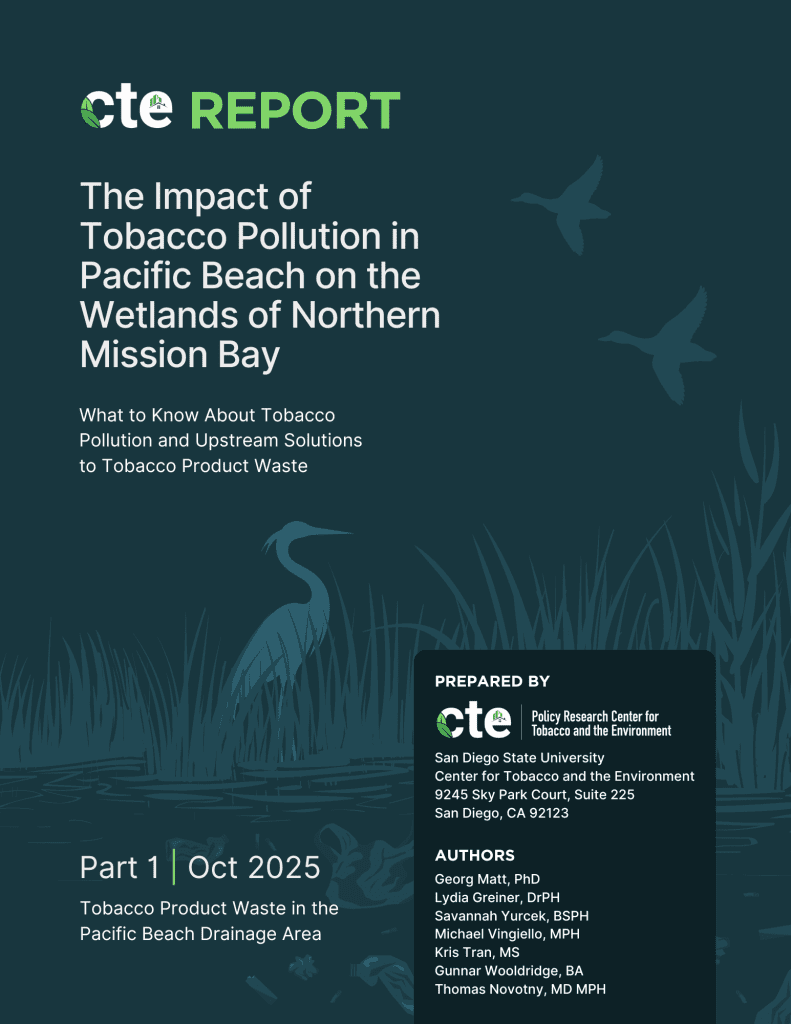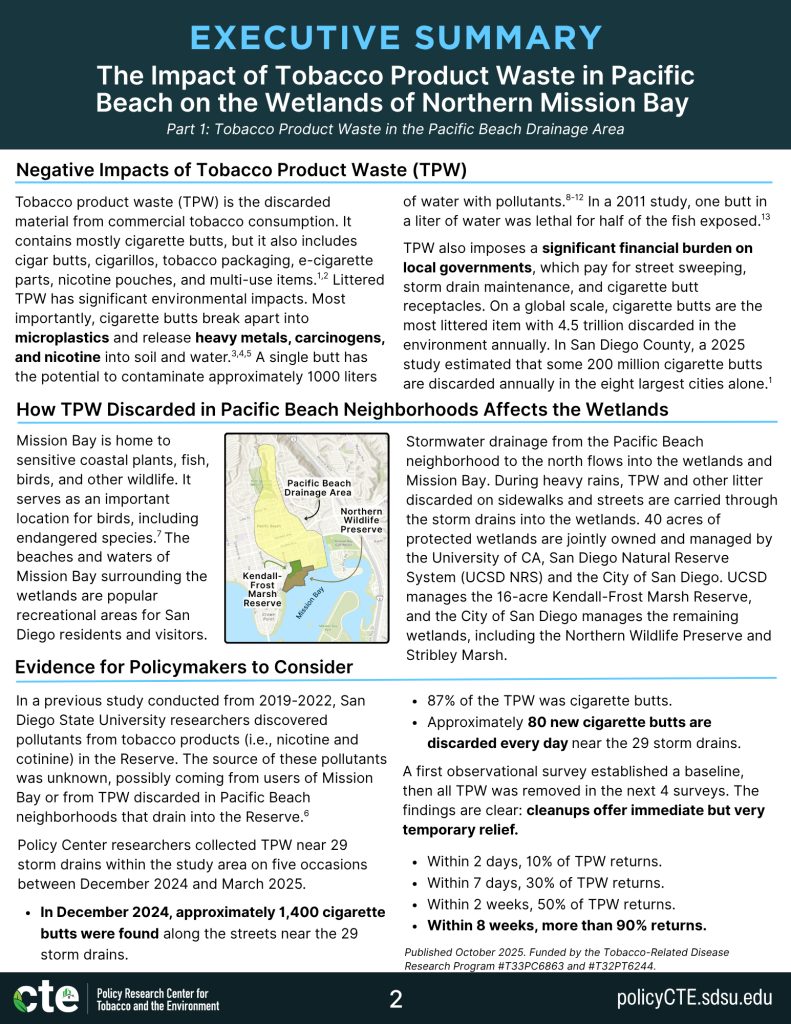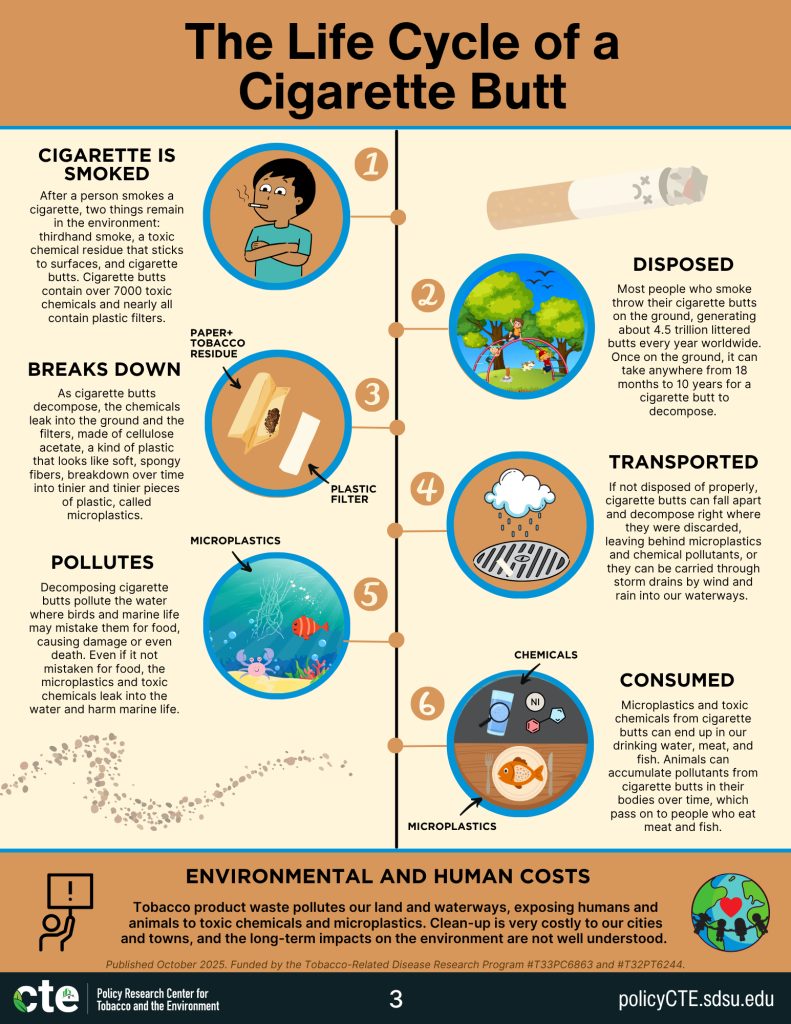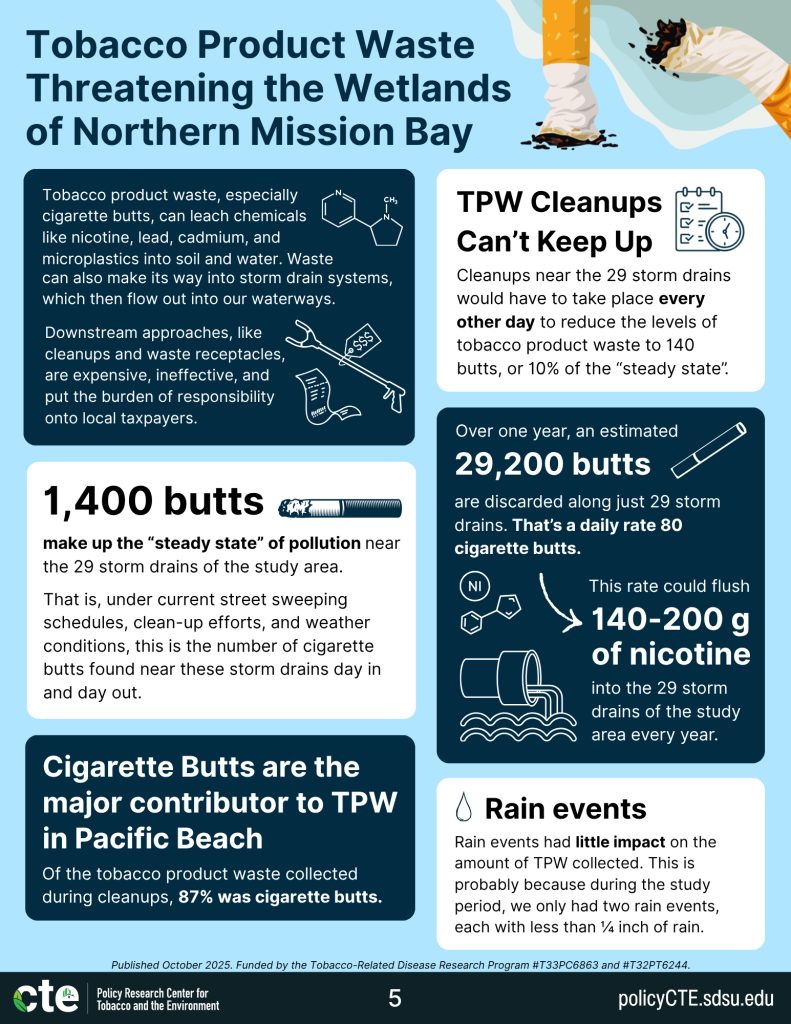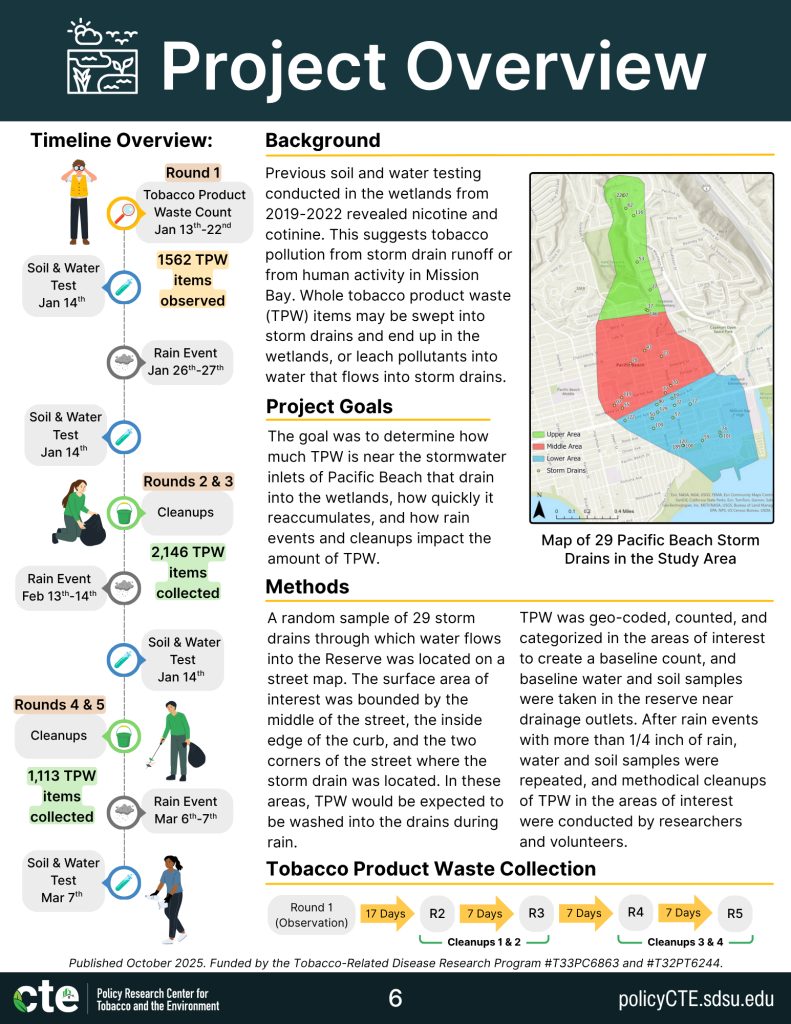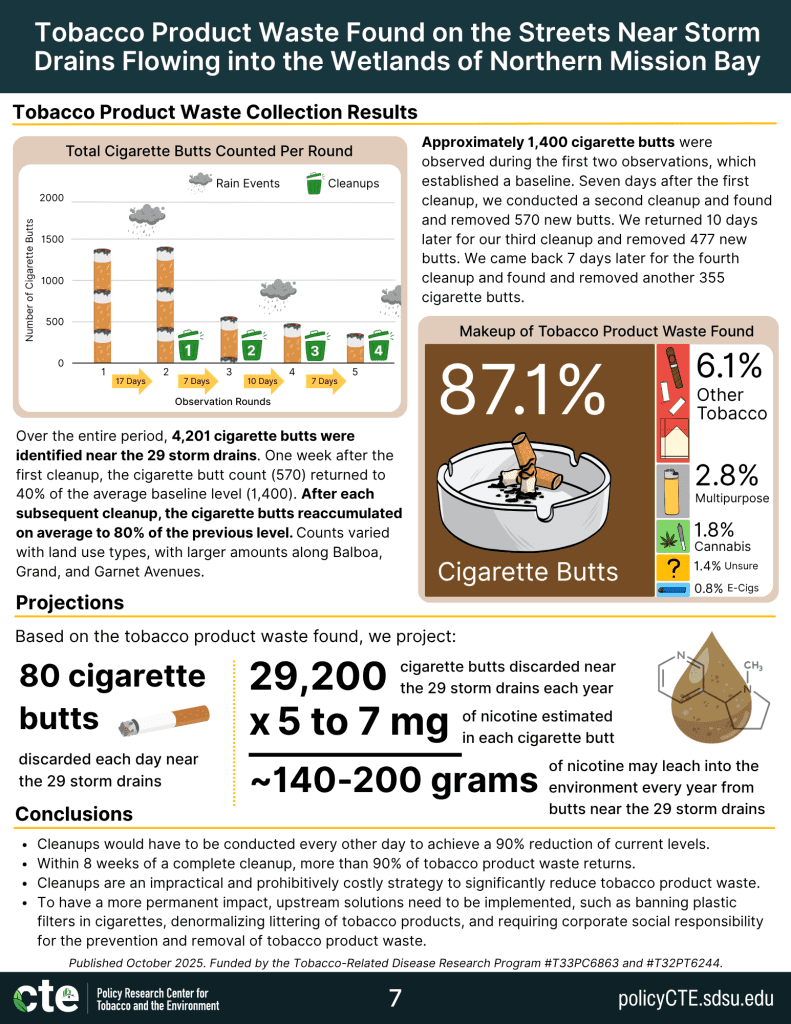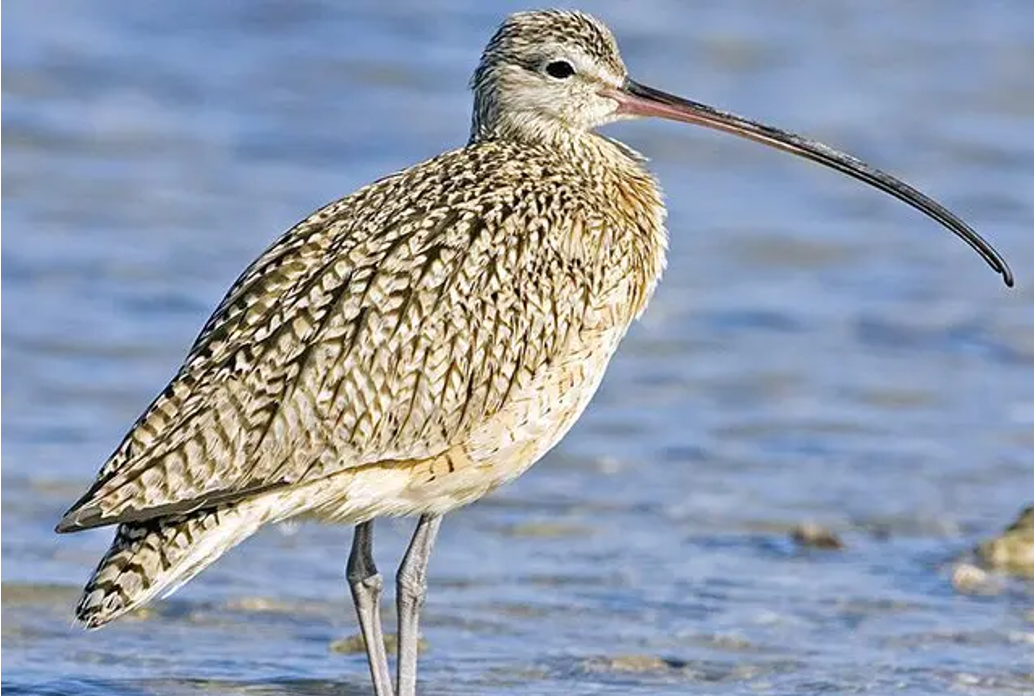 Overview
Overview
Tobacco product waste that litters the streets of San Diego County makes its way into local waterways through runoff after storms. Both plastic tobacco product waste and the chemicals in tobacco product waste pollute these environments, hurting many species – including humans – who live, work, and play in these waterways. The Policy Center wants to raise awareness on effective ways to reduce tobacco product waste in aquatic environments.
Rapid Response Projects (RRPs)
We asked these questions for this Policy Initiative:
- How does a rain event impact tobacco pollution at the Kendall-Frost Mission Bay Marsh Reserve?
- How does tobacco pollution impact the reserve over a season?


